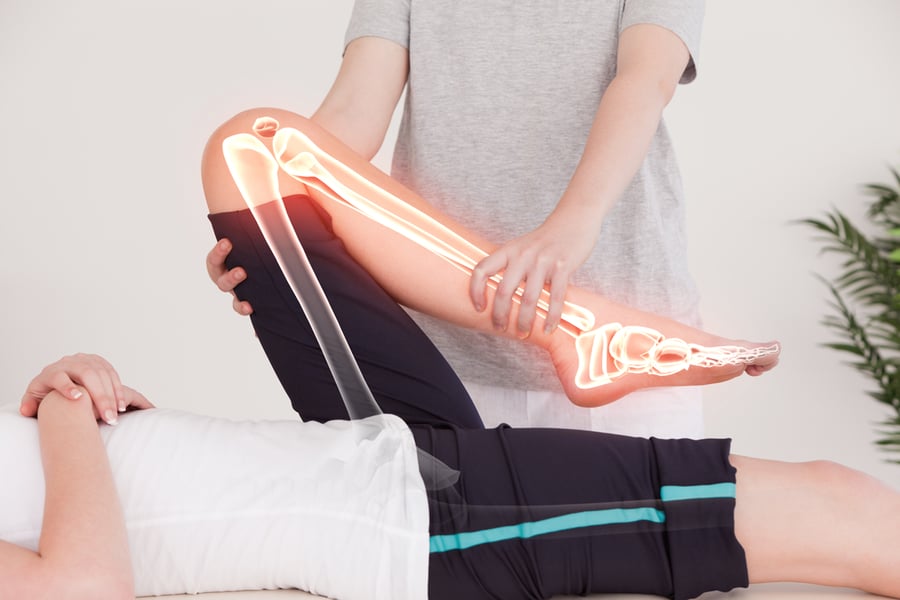
Arthritis is a type of inflammation of one or more joints. It can lead to stiffness and pain in any one of your body joints, but is most common in smaller joints like your feet and ankles.
Types of Arthritis You Can Get In Your Feet
There are over 100 types of arthritis — many that affect the ankle and foot. All forms of arthritis can cause difficulty walking and performing activities you enjoy. Some common forms of arthritis that could affect your feet include:
1. Osteoarthritis (OA): Your first metatarsophalangeal joint (MTP) is most commonly affected by osteoarthritis. This joint connects your foot and big toe. Osteoarthritis can also be found in your ankle and midfoot.
2. Gout: Gout often affects just your feet, often your big toe.
3. Rheumatoid arthritis (RA): This typically develops in both feet, affecting the same joints in both feet. Unlike osteoarthritis, RA often affects one specific joint.
4. Ankylosing spondylitis: Ankylosing spondylitis causes pain at your Achilles tendon, plantar fasciitis and other types of enthesitis.
5. Psoriatic arthritis (PsA): PsA can also affect your toes, causing dactylitis (sausage-like swelling). Inflammation of the entheses (the site where ligaments and tendons attach to your bones) often accompanies PsA. It typically presents as plantar fasciitis in your feet. Plantar fasciitis is an inflammation of a band of tissue connecting your toes and heel bone as well as your bone spurs (bony projections) which can lead to pain if they rub or press on other soft tissues or bones.
Symptoms of Arthritis in Your Feet
Osteoarthritis, the most common type of arthritis affecting your feet can cause symptoms such as:
-
Swelling near your affected joint
-
Stiffness and pain in your affected foot
-
Bony protrusions (spurs)
-
Difficulty walking and limited range of motion
Over 90 percent of individuals with RA develop ankle and foot symptoms over the course of the condition.
Unlike OA, which usually impacts one specific joint, RA symptoms typically appear in both your feet and affect the same joints on both feet. Common symptoms are swelling, stiffness and pain.
Treatment for Arthritis in Your Feet
Arthritis has no cure, but there are various arthritic foot care treatments that can help relieve the disability and pain it causes.
Nonsurgical Methods
Nonsurgical methods for treating ankle and foot arthritis include:
-
Pain relievers
-
Steroid medicines injected into your joints
-
Arch supports or pads
-
Anti-inflammatory medications for reducing swelling in your joints
-
Physical therapy
-
Braces or canes for supporting your joints
-
Weight control
-
Custom shoes
-
Orthotics (inserts for supporting your foot and ankle)
Surgical Treatment
Your doctor might suggest surgery if your pain is causing disability and nonsurgical treatment isn't relieving it. The type of surgery you have will depend on the location and type of your arthritis and how the impacts your joints. More than one type of surgery may also be recommended in some cases.
Types of surgery include:
1. Arthroscopic debridement: This type of surgery could be helpful in the earlier stages of arthritis. It's a cleansing procedure that removes inflamed synovial tissue, loose cartilage and bone spurs from around your joint.
2. Arthrodesis (fusion): Arthrodesis fuses your joint bones completely and makes one continuous bone from a couple or more bones. The procedure's goal is to eliminate arthritic joint motion to reduce pain.
3. Arthroplasty (total ankle replacement): In this procedure, the doctor removes the damaged bone and cartilage and then positions new plastic or metal joint surfaces, restoring joint function.
Sometimes, surgery helps to relieve arthritis pain, making it simpler to perform everyday activities. Full recovery may take anywhere from four to nine months, but depends on how severe your arthritis is before your surgery and how complex the procedure is.
If you have foot pain and arthritis, schedule an appointment with one of our Sweeney Foot & Ankle specialists one of our two convenient locations in The Woodlands or Magnolia.







